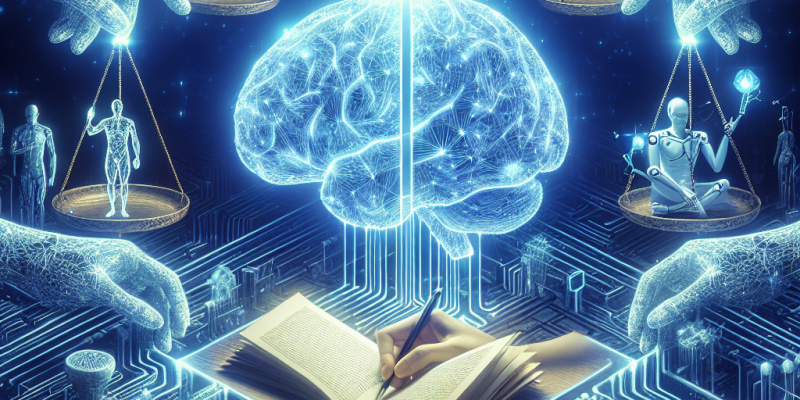Guardrails for AI: Establishing Ethical Principles to Shape Technology

As artificial intelligence (AI) continues to evolve and integrate into the fabric of our daily lives, the need for ethical guidelines—commonly referred to as “guardrails”—has never been more pressing. These principles aim to ensure that AI technologies are not only effective but also align with human values, promoting fairness, accountability, and transparency.
The Importance of Ethical AI
AI systems are increasingly making decisions that impact various aspects of society, from hiring practices to law enforcement and healthcare. The stakes are high: biased algorithms can perpetuate discrimination, opaque decision-making can erode public trust, and uncontrolled AI deployment can lead to unintended consequences. By implementing ethical guardrails, we can mitigate these risks and harness AI’s potential for societal good.
Key Ethical Principles for AI
1. Fairness
AI should be designed to treat all individuals equitably, mitigating biases that can lead to discriminatory outcomes. This involves scrutinizing data sources for inherent biases, adopting diverse perspectives in development, and regularly testing algorithms for fairness. Organizations must implement corrective measures to ensure that all stakeholders can benefit from AI advancements.
2. Transparency
Transparency is crucial for fostering trust in AI systems. Stakeholders should understand how decisions are made, which data is used, and the underlying algorithms’ logic. Companies can improve transparency by providing clear documentation and explanations, allowing users to question AI-generated outcomes and better understand system performance.
3. Accountability
When an AI system makes a mistake, identifying who is responsible is essential for accountability. Creating clear frameworks for responsibility—whether that lies with developers, companies, or even policymakers—can help resolve ethical dilemmas and provide recourse for affected individuals. Rigorous auditing processes should accompany AI deployment to ensure compliance with ethical standards.
4. Privacy
The collection and usage of data raise significant privacy concerns. AI systems often require vast amounts of personal information, leading to potential misuse. Ethical AI must prioritize user privacy through data protection mechanisms and user consent protocols, allowing individuals to control how their data is used and shared.
5. Safety and Security
AI systems should be designed with safety and security in mind, prioritizing the well-being of users and society at large. This includes rigorous testing to avoid harmful malfunctions and implementing robust cybersecurity measures to protect AI infrastructures. Regular updates and assessments can help ensure continued compliance with safety standards.
6. Inclusivity
It is essential to ensure that diverse groups of people have a voice in the development and deployment of AI technologies. Inclusion fosters innovation and ensures that AI solutions are relevant and beneficial to various communities. Engaging with diverse stakeholders can lead to richer ideas and more comprehensive ethical considerations.
Frameworks and Guidelines
Various organizations and governments around the world have begun to establish frameworks for ethical AI. The European Union’s AI Act, for instance, proposes a regulatory approach to ensure that AI technologies align with human rights and democratic values. Similarly, the IEEE’s Ethically Aligned Design initiative offers guidelines for embedding ethical considerations into AI development processes.
Industry Best Practices
Companies, too, are taking proactive steps by establishing AI ethics boards, conducting impact assessments, and investing in training for developers on ethical AI practices. By embedding ethical considerations into their corporate governance and decision-making processes, organizations reinforce their commitment to responsible AI deployment.
The Role of Education and Collaboration
Education plays a pivotal role in fostering an ethical AI landscape. Universities, professional organizations, and training institutions must incorporate ethics into their curricula for data science and computer science programs. Encouraging interdisciplinary dialogue among ethicists, technologists, policymakers, and the public can lead to more comprehensive and grounded ethical frameworks.
Conclusion
Establishing guardrails for AI is not just a technological necessity—it is a moral imperative. By committing to fundamental ethical principles, we can guide the development and application of AI technologies in a manner that maximizes benefits while minimizing harms. The collaborative efforts of policymakers, industries, academia, and civil society will be crucial in shaping a future where AI enhances human well-being, upholds dignity, and respects fundamental rights. Together, we can ensure that AI serves as a force for good.














